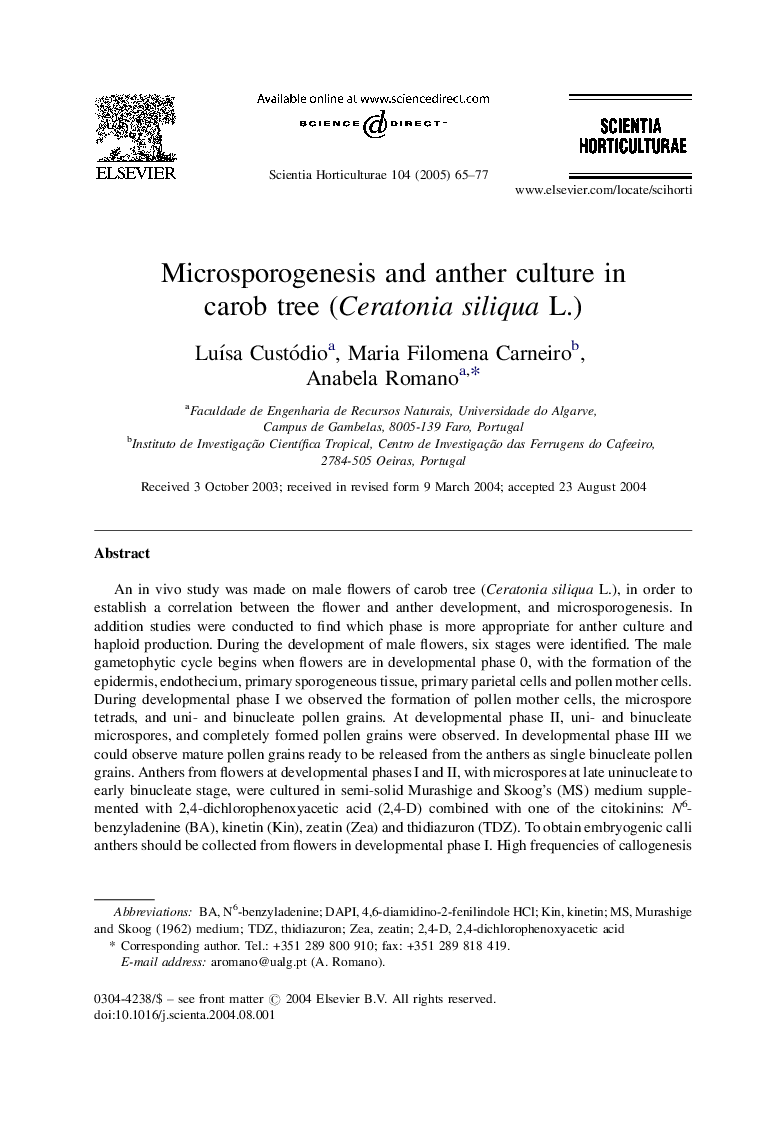| Article ID | Journal | Published Year | Pages | File Type |
|---|---|---|---|---|
| 9488910 | Scientia Horticulturae | 2005 | 13 Pages |
Abstract
An in vivo study was made on male flowers of carob tree (Ceratonia siliqua L.), in order to establish a correlation between the flower and anther development, and microsporogenesis. In addition studies were conducted to find which phase is more appropriate for anther culture and haploid production. During the development of male flowers, six stages were identified. The male gametophytic cycle begins when flowers are in developmental phase 0, with the formation of the epidermis, endothecium, primary sporogeneous tissue, primary parietal cells and pollen mother cells. During developmental phase I we observed the formation of pollen mother cells, the microspore tetrads, and uni- and binucleate pollen grains. At developmental phase II, uni- and binucleate microspores, and completely formed pollen grains were observed. In developmental phase III we could observe mature pollen grains ready to be released from the anthers as single binucleate pollen grains. Anthers from flowers at developmental phases I and II, with microspores at late uninucleate to early binucleate stage, were cultured in semi-solid Murashige and Skoog's (MS) medium supplemented with 2,4-dichlorophenoxyacetic acid (2,4-D) combined with one of the citokinins: N6-benzyladenine (BA), kinetin (Kin), zeatin (Zea) and thidiazuron (TDZ). To obtain embryogenic calli anthers should be collected from flowers in developmental phase I. High frequencies of callogenesis were obtained, and the best medium for calli induction was MS supplemented with 0.5 mg lâ1 2,4-D + 4 mg lâ1 TDZ. The frequency of haploid cells was found to be 17.2%.
Keywords
Related Topics
Life Sciences
Agricultural and Biological Sciences
Horticulture
Authors
LuÃsa Custódio, Maria Filomena Carneiro, Anabela Romano,
